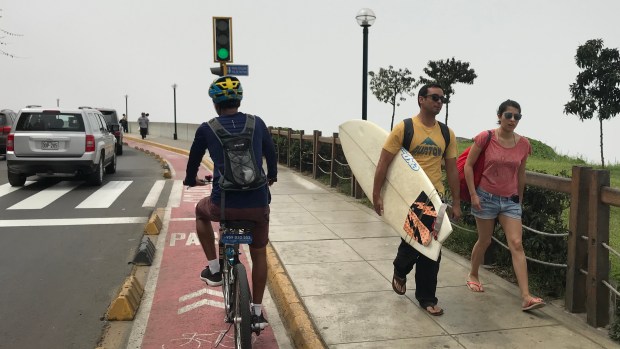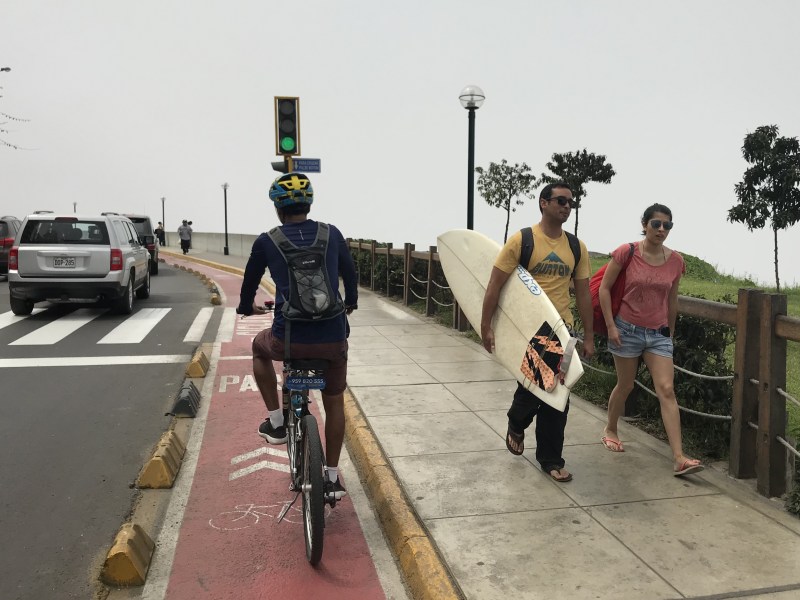
Chicago has been installing bike lanes on a regular basis since the early Nineties, and protected bike lanes since 2011. But we still don’t have a cohesive, intuitive bike network, let alone one with consistent physical protection that makes it suitable for bike riders of all ages and abilities.
Part of the reason protected bike lanes aren’t that common in Chicago is that the styles of PBLs the city typically installs are relatively expensive, labor-intensive, politically challenging, and/or logistically tricky to implement. Curbside bikeways sheltered from traffic by concrete curbs are pricey and time-consuming to build. And if the bikeway design needs to be modified, its a hassle to break up the concrete and reinstall it.
Bike lanes that are protected by parked cars often require eliminating some car spots near intersections to maintain safe sight lines, which can draw a backlash from merchants and motorists, and often requires compensating the meter concessionaire for lost revenue. In some locations with no parking, the Chicago Department of Transportation has installed curbside lanes delineated by sporadically-placed flexible posts, but that’s not especially effective for keeping motorists from driving or parking in the bikeway.
But an upcoming bikeway project in Logan Square will demonstrate a fairly cheap, quick, flexible, and effective approach to installing protected lanes that should be repeated across the city. According to a report from Block Club Chicago’s Mina Bloom, on Monday CDOT will start installing plastic curb-protected bike lanes on Milwaukee Avenue — Chicago’s busiest biking street — between Western and California avenues. The project should be finished in about two weeks.
Local alderman Daniel LaSpata told Block Club CDOT is using plastic curbs and bollards from Qwick Kurb for their “cost, flexibility, and short timeline for installation.” It’s not clear whether the company is donating the materials as a demonstration project. Some metered parking spots on Milwaukee will be eliminated as part of the project, with new metered spaces created elsewhere in the ward to compensate the concessionaire.
CDOT will also be striping new crosswalks, building curb extensions, and installing a bus boarding island at Milwaukee and Maplewood, plus about about three dozen new bike racks, later this fall. The latter is a good idea, since some cyclists have been grumbling about the new “lock-to” dockless electric scooters hogging space on racks.
Granted, the plastic curbs won’t guarantee that drivers will keep out of the bike lanes, but they should be much more effective than just paint and a few plastic posts. I’ve seen plastic curb-protected bike lanes in Latin-American cities like Lima, Peru, and Mexico City, and they seemed to offer fairly effective protection.
So why not start installing curbside plastic curb-protected all over Chicago in locations where parking is prohibited, perhaps using somewhat taller, more robust plastic curbing that what’s planned for Logan. And while we’re at at it, let’s use plastic curbs to help keep car drivers out of bus lanes as well.
Follow John Greenfield on Twitter at @greenfieldjohn.






